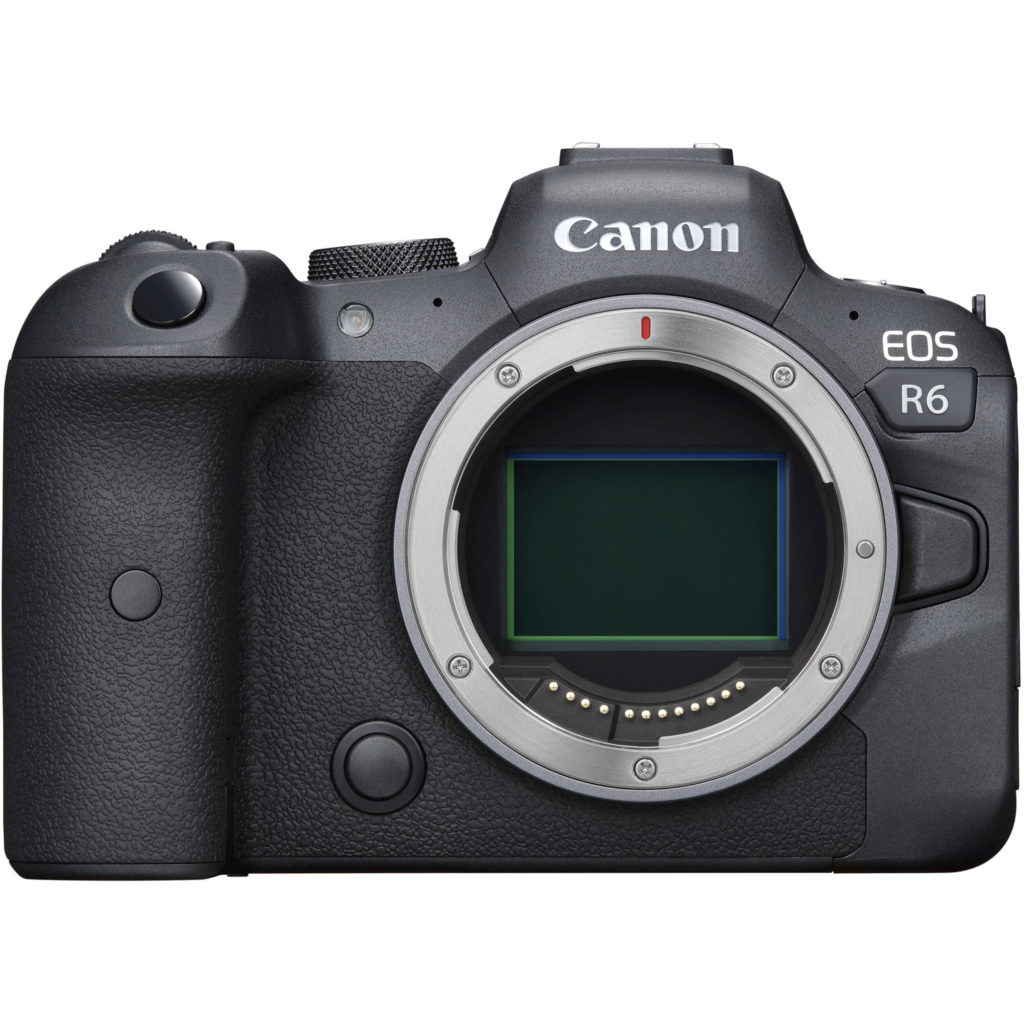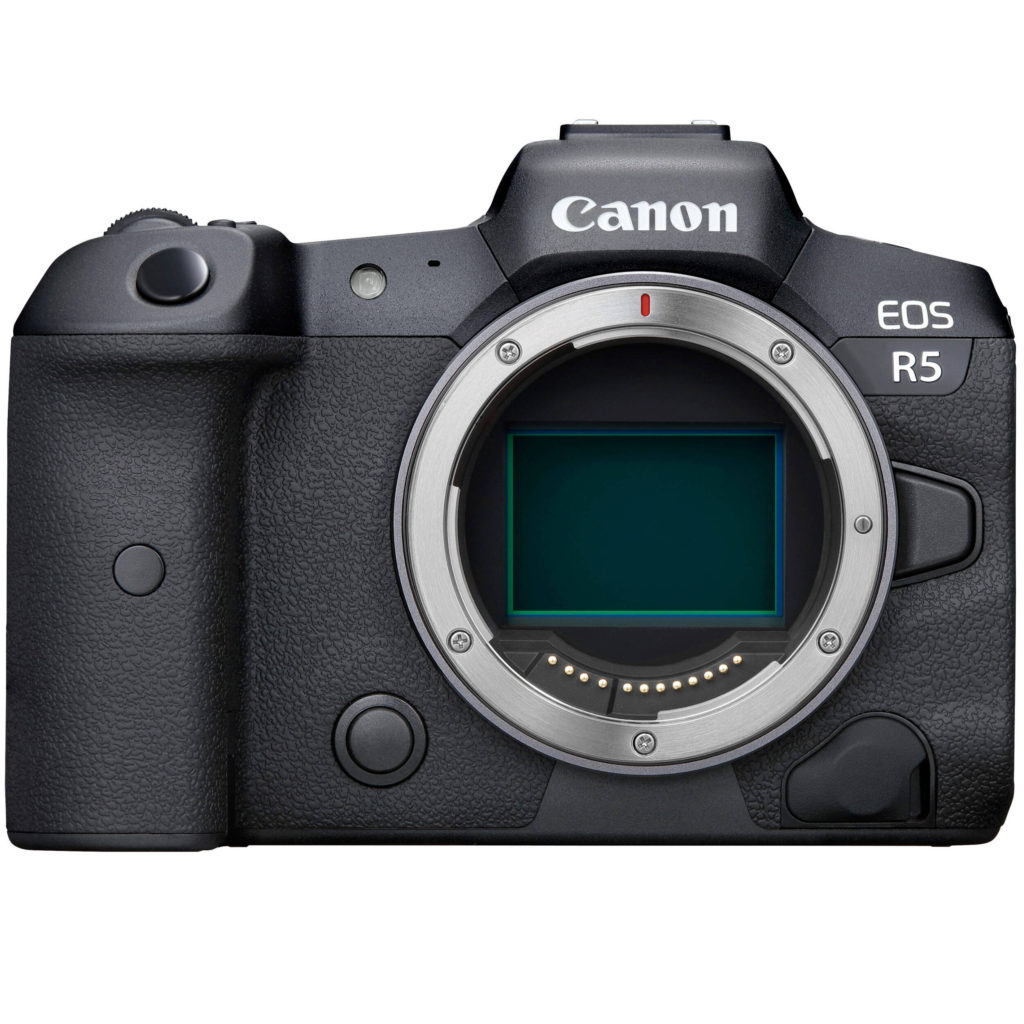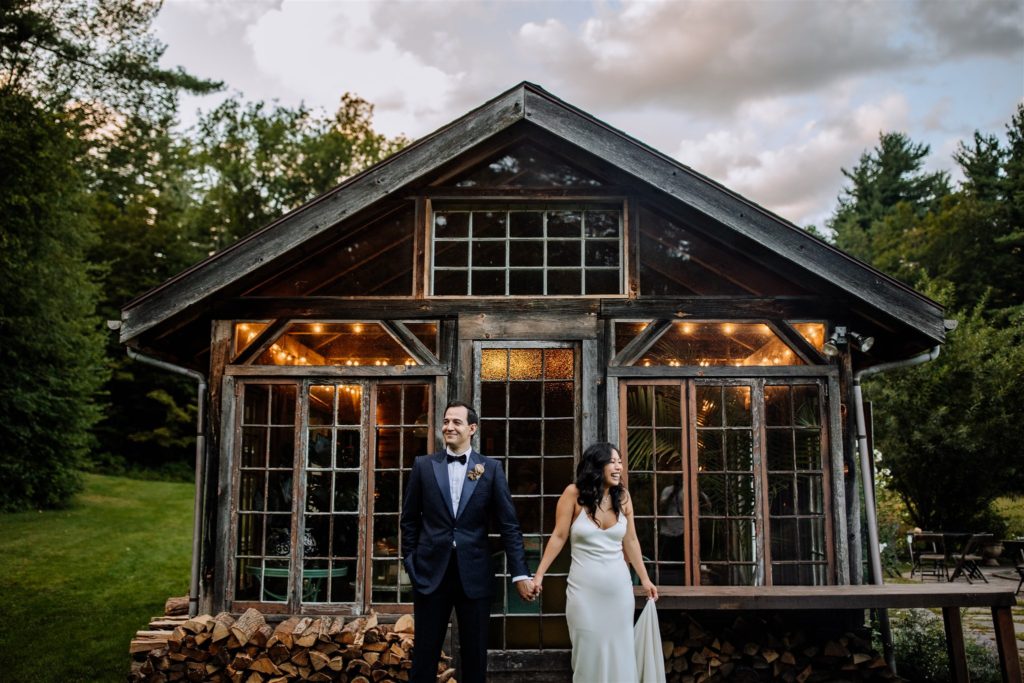For this article comparing the Canon R6 vs. R5 cameras – we are going to be looking at the main features of each camera, and helping you to decide which one is right for your photography needs.
If you want a quick answer, our opinion is that the Canon R6 is the best choice due to its lower price point and still high quality images and overall performance. That is not to say the Canon R5 is a bad camera by any means (let’s be clear – it’s not!), however it’s primary difference when compared with the R6 is simply the enhanced image quality.
Before we do a more extensive comparison of the Canon R6 vs R5, let’s get to know each camera individually.

Is the Canon R6 a good camera?
Yes.
As you can read in our Canon R6 review, we decided to purchase the R6 because, as professional wedding photographers, we needed a reliable replacement. Most of what we had heard about this camera through other photographers we regularly network with was true – and since getting used to using it, it has made our photography better simply by using it vs. other cameras we own.
The main draws of the R6 are it’s autofocus system, excellent low light performance, and image quality. Of course, the price point is also very attractive as it’s lower than many DSLR offerings for comparable quality. The price, in our opinion, is well within the range of what a professional photographer would expect to pay – and probably at the top of the range for a hobbyist who may want the extra performance, functionality and image quality without being cost prohibitive.
Canon R6 Specs:
- 20MP Dual Pixel CMOS Sensor
- In-body stabilization rated at up to 8EV of correction
- Dual Pixel AF II with AI-trained subject tracking and 100% AF coverage
- 20 fps shooting with e-shutter, 12 fps mechanical
- UHD 4K shooting at up to 60p, 1080 at up to 120p
- 10-bit 4:2:2 internal recording in either C-Log or HDR PQ
- 10-bit HDR photos in HEIF format
- 3.68M-dot EVF
- 1.62M-dot fully-articulated rear touchscreen
- New battery rated at around 380 shots per charge (EVF)

Is the Canon R5 a good camera?
Yes.
The Canon R5 is a good camera for sure. Objectively, if you compare the specs of the Canon R5 vs. R6 – it is even a “better” camera. And for some specific applications, that is definitely true (we cover those in our full review on the Canon R5 camera).
Our main gripes with the R5 is simply the significantly higher price point, that is difficult to justify with virtually no recognizable impacts to camera performance, and the main difference being higher quality images.
Canon R5 Specs:
- 45MP full-frame Dual Pixel CMOS sensor
- 8K video, with option for Raw or 10-bit 4:2:2 C-log or HDR PQ
- Up to 4K/120p, or oversampled 4K up to 30p
- 100% coverage Dual Pixel II AF system with human and animal detection trained by machine learning
- 12 fps / 20 fps bursts (mech. / elec. shutter)
- 5.76M-dot OLED EVF with 120 fps max refresh rate
- 3.2″ 2.1M-dot fully articulating touchscreen
- 10-bit HDR photos in HEIF format
- 1x CFexpress slot, 1x UHS-II SD slot
- Claimed weather-sealing to EOS 5D Mark IV levels
- 2.4/5Ghz Wi-FI with Bluetooth and FTP connectivity
- CIPA rated to around 320 shots (using EVF)
7 Ways the Canon R6 and Canon R5 are the same:
When comparing the Canon R6 vs R5, it’s important to realize that by and large these are very similar cameras. Here’s some reasons why we feel this way:
1). Dual Pixel II AF system
Both the R6 and R5 share the same autofocus system. Regardless of which camera you buy, you will be in for a treat with excellent AF performance in virtually any scenario. We have found the autofocus in these cameras to be one of the main selling points, and it’s the main reason we switched from our DSLR cameras to Canon’s mirrorless line.
2). 20 frames per second (with electrical shutter)
There are 2 main reasons why we care about the frames per second (fps) of our cameras:
- We like to create GIFs for our clients (basically – stop motion images)
- When photographing weddings, we sometimes rapidly fire using continuous shutter in order to capture specific moments with certainty (such as a first kiss during a wedding ceremony)
In the case of these two cameras, both perform exactly the same and can provide up to 20 fps when using the electrical shutter on the camera. This is double the fps of previous DSLR cameras you may be familiar with like the Canon 5D Mark IV.
3). Electric viewfinder
Both cameras have electric viewfinders, which makes it feel like you are looking at a picture as opposed to through a piece of glass like more conventional viewfinders. The R6 and R5 have the same viewfinders with exception given to the specific detail of the viewfinders (more on that in the section below).
4). Lightweight (practically the same)
The Canon R6 weighs 598g (~21.09 oz), and the R5 weighs 650g (22.93 oz). For the Americans here (ourselves included), this means both cameras are just under 1.5 pounds. If you were holding each, you would likely not recognize the difference between them – but you would notice a difference if you held a much heavier camera like a DSLR.
5). Weather sealed
All of Canon’s professional line of cameras are weather sealed. It should be noted that weather sealing is different than being weatherproof (or waterproof). In practice, it will survive through exposure to rain and snow, however you should not submerge it in water or keep it exposed for long periods of time.
We have used these cameras in light rain, and they continue to perform well.
6). Articulating touch screen
One of the best features for Canon’s mirrorless cameras is not only the touch screen, but the fact it can articulate to other positions. We regularly use this functionality when taking photos from higher up (like – holding our hands over our heads) or lower down where it would be impossible to see through the viewfinder (without laying down).
7). In camera body stabilization
The in-camera stabilization is another great feature found on both the R6 and R5, and contributes to more in focus images. In camera stabilization helps offset issues you may have as a result of minor shaking of the camera as sometimes happens naturally while taking photos.

7 Ways the Canon R6 and Canon R5 are different:
1). Image quality.
The biggest difference is the image quality. The Canon R6 has a 20 megapixel sensor, while the Canon R5 has a 47 megapixel sensor. This translates into the R5 having more pixels per image, and thus a higher quality of image.
It should be known that for most applications – like viewing photos on a normal computer, cell phone, hosting on a website or in an online viewing gallery, the difference will be impossible to recognize. The higher image quality of the R5 will only really be recognized when the images need to be magnified significantly – such as for large physical prints.
The more detailed images of the R5 will also be better for image cropping when compared with the R6’s files.
2). Video recording resolution.
While we do not focus on videography on this website, it is one of the major differences between these cameras (and a videographer may choose the R5 vs the R5 for this reason). The R5 offers up to 8K recording capabilities, while the R6 is capped at 4K resolution.
3). Low light performance.
Surprisingly, the more affordable R6 has superior low light performance when compared with the R5.
For the nerds among us – this is due to the Canon R6 having slightly larger pixels in it’s sensor than that of the R5, which results in better low light capabilities as it produces less grain in the resulting photos.
4). Electric viewfinder resolution quality.
Like we had mentioned earlier in this post, the electric viewfinder (EVF) is only difference in it’s resolution. The R6 has 3.69 million dots, while the R5 has 5.69 million dots. In practice, this difference is virtually meaningless and has had no positive or negative impact on our ability to create the photos we intend too. It is just a relatively minor quality of life enhancement as an R5 owner.
5). Battery life performance.
A new battery used in the Canon R6 can expect to take 320 shots per charge, while a new battery used in the Canon R5 can expect to take 380 shots per charge. Each camera uses Canon’s proprietary batteries, most recently the LP6NH battery that performs better than previous camera batteries by the company.
In our experience, your mileage will vary as battery performance is influenced by a lot of factors such as:
- How much you are using flash (more flash will drain batteries quicker)
- The temperature (we find batteries die quicker in the cold)
- Age of the batteries (older batteries die quicker than new ones)
- Type of battery (Canon camera batteries perform better than off brand ones in our experience)
6). ISO range.
R6 ISO range is 100 – 102,400, expandable to 50-204,800.
R5 ISO range is 100 – 51,200, expandable to 50-102,400.
This is largely technical jargon that doesn’t have much application to how you will actually use either camera. The R6 is slightly better in this regard – and the only practical information that comes from this is that the R6’s sensor is better designed to handle lower light scenarios (as we’ve already mentioned). It’s ultimately a minor point of difference.
7). Different memory card requirements.
The Canon R6 can dual write to 2 regular SD card slots. The Canon R5 has 1 regular SD card slot, and 1 CFexpress type B card slot. The CFExpress card is required to take advantage of the camera’s speed and file capacities, especially when shooting 8k video.
As photographers, we actually prefer the R6’s setup with 2 standard SD cards as this is easier for our workflow and we already own a ton of these. Each CFExpress card costs ~$200 (for a 128gb card), and it somewhat feels like a waste if you do not require it for the higher capacity video needs.
Should I get the Canon R6 or R5?
For us, when deciding the buy the Canon R6 vs R5 – we opted for the R6 because it provides exactly what we need as professional wedding photographers. The R5, while an excellent camera, is a bit overkill for our purposes.
The R6 is really ideal for a large variety of photographers and photography styles. At it’s price point, it felt like a no brainer to purchase.
The R5 comes in handy if you really need the increased image quality as may be found with real estate photographers, fine art photographers or similar, or are wanting a better camera for video purposes. The R5 comes in at approx. $1,500 more than the R6 – so we just don’t see enough extra value for our purposes to justify the cost.
Conclusion
The Canon R mirrorless camera line has been impressive up to this point. When comparing the R6 vs R5, it’s almost like comparing two different apples. Ultimately, they taste pretty similar, with just a few differences that will leave each photographer feeling a little differently. In either case, you will be served well whether you choose to buy the R6 or R5 due to their overall performance and image quality.
Canon R6 vs R5 – Common Questions Answered
Is the Canon R6 20MP enough? Yes*. For most applications, 20 megapixels will be more than enough. We use the Canon R6 for wedding photography for above-average priced client packages, and have only received enthusiasm over these images. 20 megapixels is also sufficient to create physical prints for most household purposes such as wedding albums and home wall art.
How do the autofocus systems compare? The autofocus systems are the same in each camera. The performance is excellent. Because of this, the R5 feels to us like a lower value because we would expect better performance than the cheaper priced camera.
Is the R6 or R5 worth the money? Yes. They are both worth the price. The R6 does have an edge here as the cost-to-value ratio is very high. The R5 is worth it, but for a smaller group of photographers and videographers.